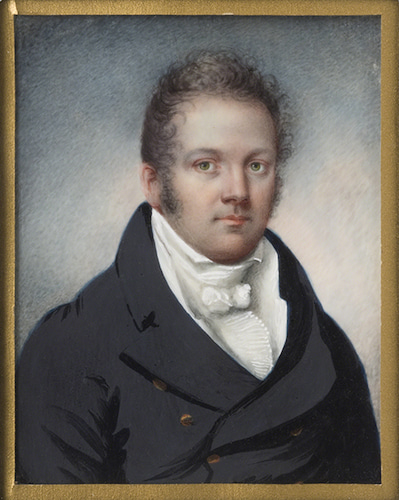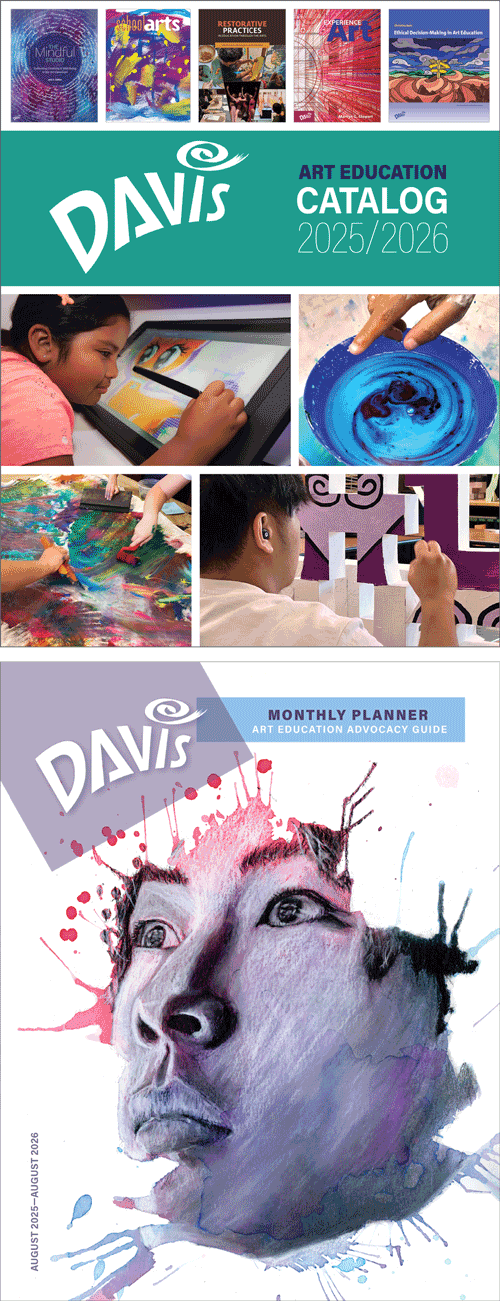World Watercolor Month: Ann Hall
I have mentioned my trepidation about using watercolors before, and how I find it to be a very unforgiving medium. The fact that there have been and still are such brilliant watercolor artists justifies extending our World Watercolor Month celebration. One of the most technically fascinating of uses of watercolor is the old timey portrait miniatures of the late 1700s and early 1800s. Not until I met an actual miniature artist (who painted not only people but also pet portrait miniatures) did I understand that ivory was scored before watercolor was applied to it. Another mystery in my mind solved!
 |
| Ann Hall (1792–1863, United States), John Prescott Hall (1796–1862), ca. 1830. Watercolor on ivory, 3" x 2 ½" (7.6 x 6.4 cm). Image © 2025 Philadelphia Museum of Art. (PMA-4234) |
Ann Hall’s miniatures were greatly admired in her own period for their delicate style. She was reported to have been besieged with commissions by prominent New York families. Her group portrait miniatures fetched the then-staggering price of $500.00. In contrast to the straightforward realism seen in the miniatures of prominent New England artist Sarah Goodridge (1788–1853), Hall’s have a preciousness and sentimentality. This is reminiscent of Italian Baroque Madonna and Child compositions, which she had copied when younger. In this portrait of Hall’s brother, John, the extreme detail in the head is contrasted with the energetic, minimal brushwork of the coat.
American portrait miniatures reached their height of popularity between 1760 and the 1830s. Antecedents to these precisely painted likenesses date to the 1500s in England. The miniature is different from other forms of portraiture in that the intimate size—small enough to fit in the palm of the hand—made them highly personal expressions of family love and devotion. They were commissioned on the occasions of births, engagements, deaths, and other personal events. The miniature's popularity in America coincided with the rise in affluence of the middle class and their desire for luxury objects.
Miniatures were obviously cheaper than full-sized portraits, although these intimate objects were meant as keepsakes, often as substitutes for absent loved ones. At the height of their popularity, miniatures were most often painted by specialists in the medium, usually watercolor on a thin disk of ivory. However, several major artists of the period such as John Singleton Copley (1738–1815), Gilbert Stuart (1755–1828), and Charles Willson Peale (1741–1827) also produced them.
Artists born in America during the colonial period had little opportunity other than practice to acquire such a demanding skill as painting miniatures. The small scale and slippery surface of painting watercolor on ivory demanded an exceptionally high level of skill and patience. Instruction manuals on the Old World tradition, as well as apprenticeship with established artists, helped American artists teach themselves the skills necessary. Colonial miniaturists reveal an extraordinary range of skill in depicting nuances of dark and light, modeled form, and accurate likeness in these tiny art works.
Becoming accopmplished in the minitature technique prepared these artists to meet the increased demand for miniatures after the American Revolution (1776–1783). At this time, Americans increasingly desired to commission works of art to demonstrate their new country's refinement. The personal, devotional aspect of miniature portraits was fueled at the beginning of the 1800s by romantic inclinations in art.
Starting in the 1830s, miniature artists responded to the new medium of photography by adopting poses, formats, and props used in photography. Often they mimicked the precision of photographic portraits by using a photograph as a model. Although miniature portraiture persisted into the early 1900s—more as a nostalgic rather than practical art form—by the 1860s, photographs had eclipsed the portrait miniature as the primary means of expressing love and loss in portable form.
Hall was one of the most respected miniature painters of her day. Born in Connecticut to a prosperous and cultured physician, she showed promise in art at an early age. Encouraged by her father, Hall was cutting out paper figures and modeling in wax by the age of five. Introduced to watercolors and pencils soon after, she began to produce paintings of flowers, birds, insects, and other elements of nature. She never lost interest in her floral works and often incorporated flowers in her miniatures.
While visiting Newport, Rhode Island, Hall learned the technique of painting portrait miniatures on ivory from Samuel King (1749–1819), the teacher of Gilbert Stuart. In New York, she studied oil painting under Alexander Robertson (1772–1841), one of the earliest art teachers in America. A wealthy brother in New York sent Hall Old Master paintings from Europe for her to copy. By 1817, she was already exhibiting miniatures in the American Academy of Fine Arts in New York on a regular basis. In the mid-1820s, she moved to New York and became the first woman artist admitted to the newly formed National Academy of Design in 1827. She was the only woman elected to full membership before 1900.
Correlations to Davis Programs: Explorations in Art 2E Grade 1: 2.2; Explorations in Art 2E Grade 2: 2.2; Explorations in Art 2E Grade3: 1.1, 1.2, 1.4; Explorations in Art 2E Grade 4: 2.1; Explorations in Art 2E Grade 5: 1.2; Explorations in Art 2E Grade 6: 1.1, 1.2; Experience Art: 1.1; Discovering Drawing 3E: Chapter 7

Comments